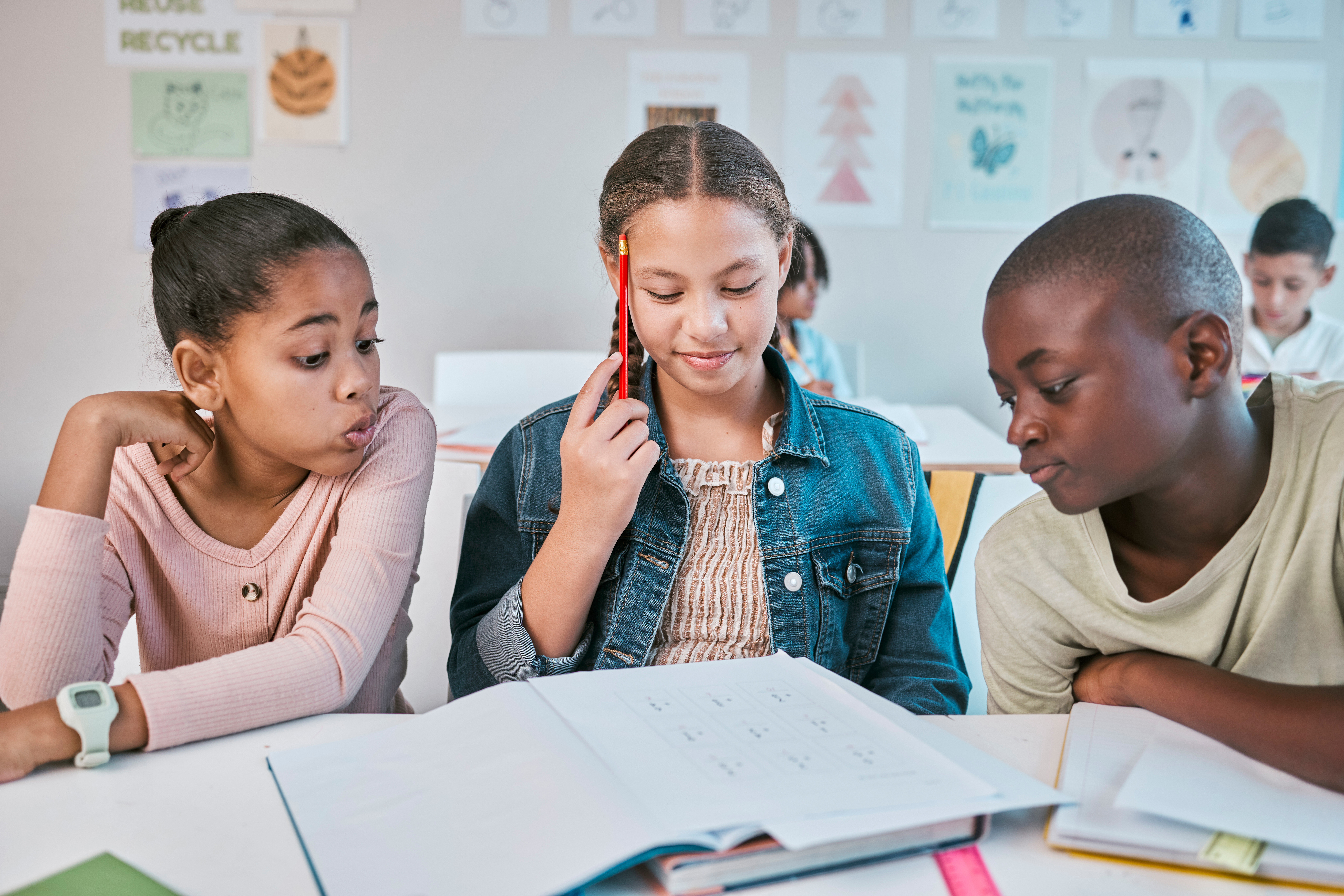
Consider the following paradox:
Teachers need to give students instructions — of course we do!
After all, instructions help students do what they need to do, so that they can learn what we want them to learn.
At the same time, too many instructions might very well overwhelm working memory.
After all, the student has to HOLD the instructions in memory while PROCESSING each one individually. And: “holding while processing” is one handy definition of working memory function.
In brief: the right number of instructions can help learning, but too many instructions can impede learning.
I recently asked a group of wise and experienced teachers this question:
“Can you think of other teaching practices — like instructions — that are beneficial in small amounts, but might create working memory overload in large amounts?”
After some time to think and discuss, one teacher answered: group work.
After all, he mused, collaboration might simplify some mental processes. But collaboration itself creates additional mental taxes — all that negotiating and delegating and coordinating and explaining.
And disagreeing.
And resolving.
Are they ways that teachers can reduce those “mental taxes” so that students get the benifits without the penalties?
If only we had a research-based answer to those questions…
Inspired by this teacher’s observation, I hunted up this study.
Quadratics in Quito
To explore this question, researchers working in Quito, Ecuador worked with 15-year-olds solving quadratic equations.
Specifically, they wanted to know if practice collaborating helps students collaborate effectively.
As is always true, research design gets tricky. But the overall design makes sense.
Some students did practice solving quadratic equations collaboratively; others didn’t.
For a second round of math learning, all students were then sorted into groups for collaborative learning.
So, did students who practiced collaborating do better on later collaboration?
For complex equations: YES. Both three days later and seven days later, students who practiced collaborating did better solving problems than students who didn’t.
For simple equations: NO. If the mental work wasn’t very hard, students didn’t need to practice to collaborate effectively.
In light of these findings, the researchers’ recommendations make good sense.
If learners are novices, learning tasks are complex, and information distribution demands [extensive cooperation], teachers should prepare group members … using similar problems.
…
If task information does not demand [extensive cooperation], it is not necessary for the teachers to prepare learners to collaborate.
I want to highlight one part of this summary: “using similar problems.”
This research team emphasizes that “collaboration” is NOT a general skill. Collaboration will look different depending on the precise demands of the discipline and the topic.
So: students who “practiced” were given a VERY specific format for learning how to collaborate on this task.
If we want to get the benefits of practice for our own students, we should be sure to tailor the practice in very specific ways.
The Story Behind the Story: an Analogy and a Principle
A research article like this study always begins with a summary of earlier research findings, conclusions, and questions.
This summary includes a particularly helpful foundational inquiry.
When does collaboration increase WM load so much as to threaten learning?
When does collaboration reduce WM load enough to promote learning?
Is there some sort of taxonomy to consider or principle to explore?
To explain, I’ll start with an analogy.
Imagine I want to illuminate a yard at night.
For all sorts of reasons, it would be simplest to have one lamp to do so. Having multiple lamps just adds to the complexity and expense of the project.
So, if my yard is small enough to be covered by one lamp, then I should use one. Adding more lamps makes the project worse — more complicated, more expensive — not better.
But at some point, a yard gets big enough to need multiple lamps. If I use only one lamp, I just can’t illuminate the full yard.
In this case, the additional expense and complexity of having multiple lamps provides a meaningful benefit.
You can see where this is going.
Here’s a potential principle:
If a cognitive problem is simple enough, then one student can solve it on her own.
Adding other students (“collaborative leaning”!) increases the WM complexity of the situation without providing any additional benefit.
In this case, each student’s mental effort has become less effective, not more effective.
If, on the other hand, a cognitive problem gets complex enough, then it goes beyond any one student’s cognitive capacity.
In that case, the problem benefits from additional students’ cognitive efforts — even though all those extra students do increase the complexity of the problem.
At some tipping point, when a problem gets complicated enough, it needs to be divided into sub-tasks — despite the complexity of managing that work.
At that tipping point, well-structured and precisely-practiced collaboration probably is more beneficial than harmful.
TL;DR
Groupwork (probably) increases WM demands on simple cognitive tasks, but reduces WM demands for complex cognitive tasks.
To get the most benefits from collaboration, students should practice that skill — and teachers should tailor the practice to the precise demands of the cognitive work.
Zambrano, J., Kirschner, F., Sweller, J., & Kirschner, P. A. (2019). Effects of group experience and information distribution on collaborative learning. Instructional Science, 47, 531-550.





